We moved into our current house in May 2018. Two months later, I was on a hiking trip with a group of friends in the Brecon Beacons when I received a distressing phone call from my partner, informing me that the mains water pipe in the upstairs bedroom had burst and we had a torrent of water flooding from the kitchen ceiling immediately beneath it. I was the person in the group responsible for driving, so I couldn’t leave, and we were quite literally in the middle of nowhere.
After a rather worried ascent up Pen-Y-Fan and a dash home the next morning, I was horrified to see water still dripping from the ceiling. My partner had done her best to remove most of the water with towels and rags, but there was still a great deal left on the floor. The next couple of days involved doing our best to dry out the kitchen, and mopping up all of the water we could, (which was a slow and arduous process).
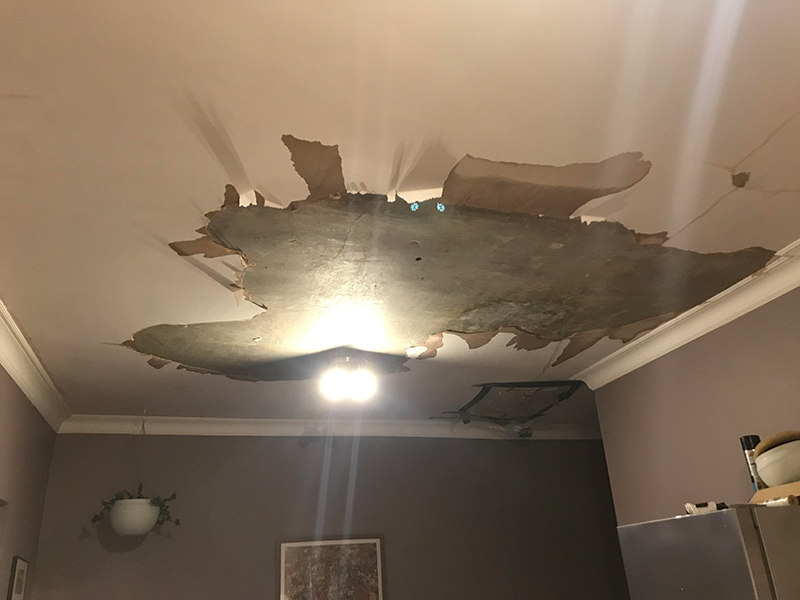
When the time came for me to review the Charles Vacuum, I immediately thought back to that catastrophe, and I imagined how much easier everything would have been if we’d had a vacuum cleaner capable of cleaning up spills. The Charles is exactly that, and he can even function as a regular dry vacuum cleaner at the same time.
So if you like the idea of being able to deal with a radiator that has leaked onto your carpet, or a washing machine that has burst a leak all over your kitchen floor, or even a major catastrophic flood, but also want a regular vacuum cleaner for dry use, read on.
- Both Wet and Dry Vacuuming
- Huge wet capacity
- Very heavy and bad for stair cleaning
- Cable storage is awkward
Charles impressed me greatly. His wet pickup ability is really impressive, and his simple, uncomplicated mechanics combined with strong, durable floor tools and accessories mean that he will likely last for years. However, even though he is a dual vacuum, his real purpose and reason for being is to suck up liquids. Therefore, I would only consider buying Charles if you know that this is something you will benefit from.
James Cook - Product Tester at The Henry Range
Who is Charles for?
Charles is best suited for people who want a vacuum cleaner that can specifically suck up liquid. This could include regular people who have experienced floods in their homes (like myself), or leaks from radiators or washing machines and who therefore know the value of being able to quickly remove such liquids before they damage flooring, or carpet. It also includes tradespeople, such as plumbers, where the risk of water escape is quite drastically higher. Charles also offers excellent dry vacuuming ability, which makes him just as useful for everyday household vacuuming tasks (in the dry). So, Charles is a really versatile wet or dry vacuum cleaner, but his main advantage over the regular
What’s the difference between Charles and Henry ?
The key difference between Charles and the original red
This difference in dry performance, as well as the increased versatility of wet vacuuming that he provides, means that Charles is usually £50 more expensive than
Unboxing
When the box arrived at my front door, it was very heavy, but when I opened it up, I was impressed by how much they had managed to fit inside, so perhaps this is not a surprise. Inside the box were a crush-proof black hose, three extension tubes (that form the wand), a combi-floor tool for dry vacuuming, a squeegee floor tool, a dry filter, a dry dust bag, and the three dry vacuum attachments (upholstery brush, soft dusting brush, and crevice tool). Lastly, the box also contains the wet filter, which has a float valve inside a cage underneath, and a washable mesh surrounding it.
Assembling Charles for dry vacuuming
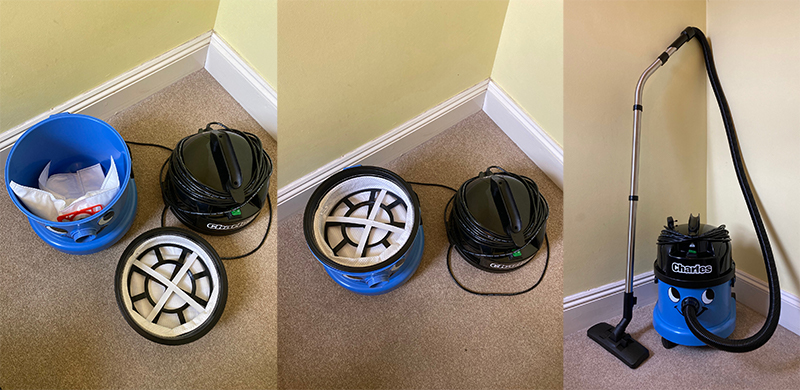
To assemble Charles for dry vacuuming, all I had to do was release the two clips on the side of the machine and lift off the motor head. Next,I unfolded the large dust bag and slid it onto the nozzle on the inside, and then I placed the dry filter on top, and then popped the head of Charles back on top of the machine, and pushed the clips back in. After that, I connected the three extension tubes together (to form the wand) and pushed one end onto the end of the hose and the other into the combi floor tool. Lastly, I screwed the other end of the hose into Charles’ nose. The whole process took less than 5 minutes.
Assembling Charles for wet vacuuming
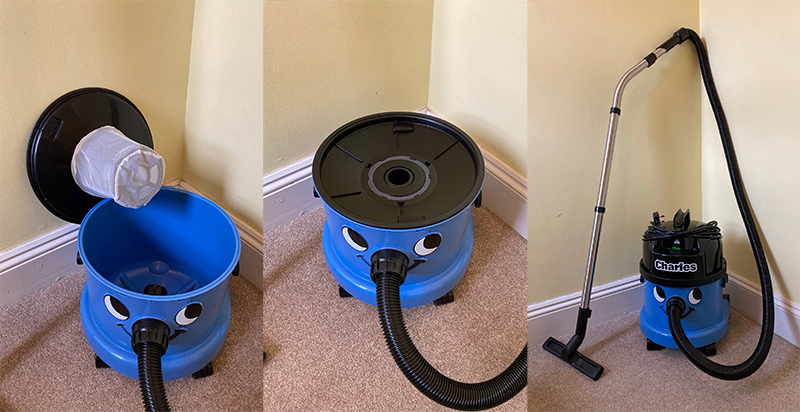
Charles is a wet or dry vacuum, which means that you can use him for either purpose but never at the same time. This is because water cannot be stored in the dust bag and cannot run through the dry filter. So to assemble Charles for wet vacuuming, I needed to remove the dry filter and dust bag and replace them with the wet filter, which is a black plastic disc with a cage underneath and a cloth mesh bag around the cage. The hose and extension wand stay the same as they can be used for both wet and dry (as can the attachments), but I switched out the combi floor tool for the squeegee floor tool. It took perhaps a minute to switch between the dry setup and the wet setup.
How does the wet filter work?
The wet filter contains a small float valve in the shape of a ball, which rises upwards inside its cage as the tank fills with water. When the float reaches the top of the cage, it effectively blocks off the suction from the motor, to ensure that the tank never overfills. This is a clever, uncomplicated design feature that made sense to me just by looking at it. It is therefore essential to never use Charles for wet pickup without this float valve inside. The mesh that sits around the cage is washable, which is another practical bonus, especially when you consider that not all liquids that you will be using the Charles to suck up will be clear and totally free of debris and other muck that will clog up the mesh filter over time.

You will always know when the tank is full, as you will suddenly lose suction power.
Floor tools and what they’re for
Charles comes with two floor tools, one for dry vacuuming (combi floor tool) and one for wet vacuuming (squeegee floor nozzle).
Combi floor tool (dry)
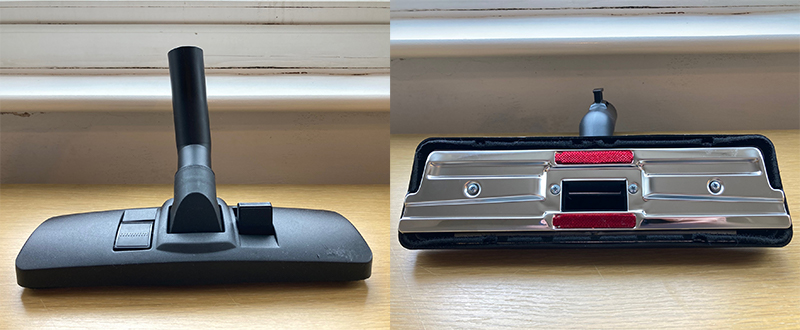
The combi floor tool is the workhorse of the
The results I got on both my carpets and the laminate in my kitchen were really excellent, using the combi floor tool. The increased suction power of the Charles, compared to
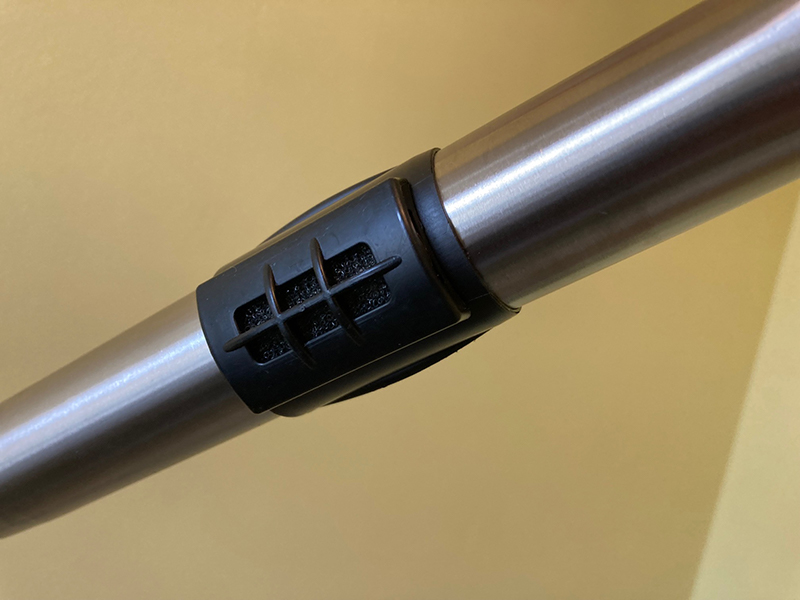
Combi floor tool before and after (one stroke up and one stroke down)
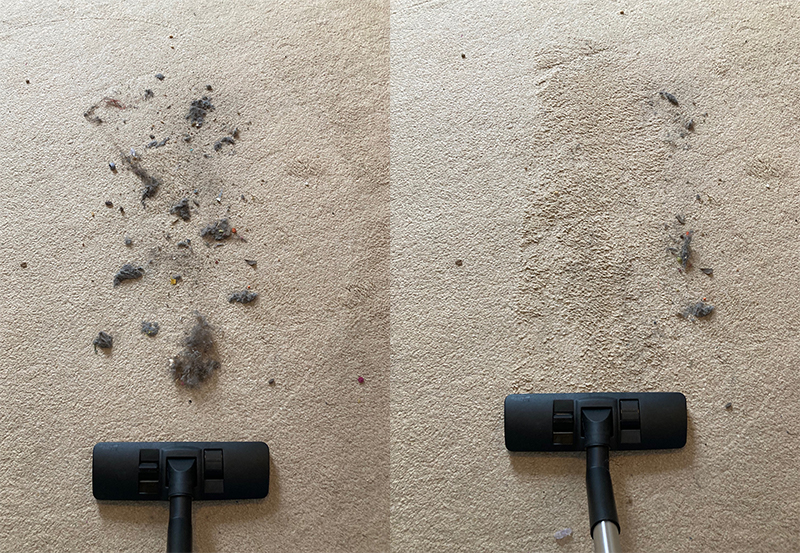
The vacuuming results were really good, but there was too much suction power, so I had to use the air bleed valve to avoid lifting up the carpet.
Squeegee floor tool (wet)
The squeegee floor tool is your main weapon for dealing with liquids, with two rubber squeegee bars (one at the front and one at the back), which act to push a wall of liquid into the centre of the floor head, where the vacuuming power takes it up the nozzle and into Charles’ tank. Two small wheels also help this tool glide along flat surfaces. There is no reason to use the squeegee for dry vacuuming, as it would simply stick to the ground and produce poor results.
Squeegee floor tool before and after (five strokes)

I was really impressed by how quickly all of the water (mixed with food colouring) was sucked up from the laminate flooring in my kitchen. The squeegee tool sucked up everything in one pass, and it took perhaps 20 seconds to remove all of this liquid, leaving the floor almost completely dry (apart from a few minor spots here and there).
Once it was all gone, I simply removed the motor and wet filter and then unscrewed the hose to allow me to pour the contents out into the sink, and down the drain.
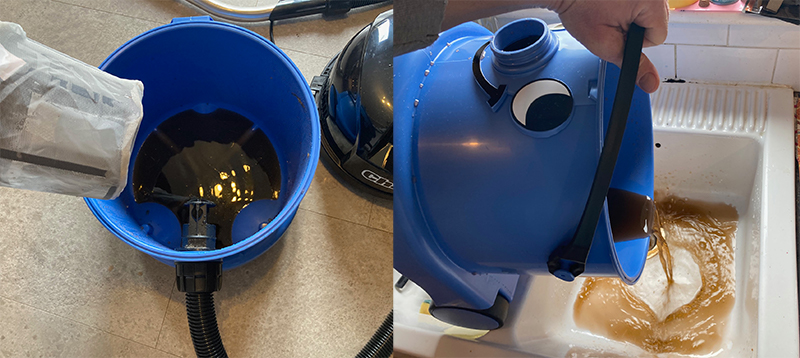
All in all, fantastic results from this floor tool and from Charles’ wet vacuuming ability. It really cemented how useful this machine is for emergency wet pickup.
Using Charles when you clean your washing machine filter
Not only is Charles a life saver for dealing with emergency water leaks, he can also be really useful for those semi-regular chores in the home that we all have to do, where the possibility of water escaping and a messy cleanup is high. For instance, when you have to clean your washing machine filter, it is common for water to pour out (which you either have to collect with a baking tray or mop up afterwards). However, with Charles, I was actually able to suck the water up as it flowed out, before it hit my laminate flooring.
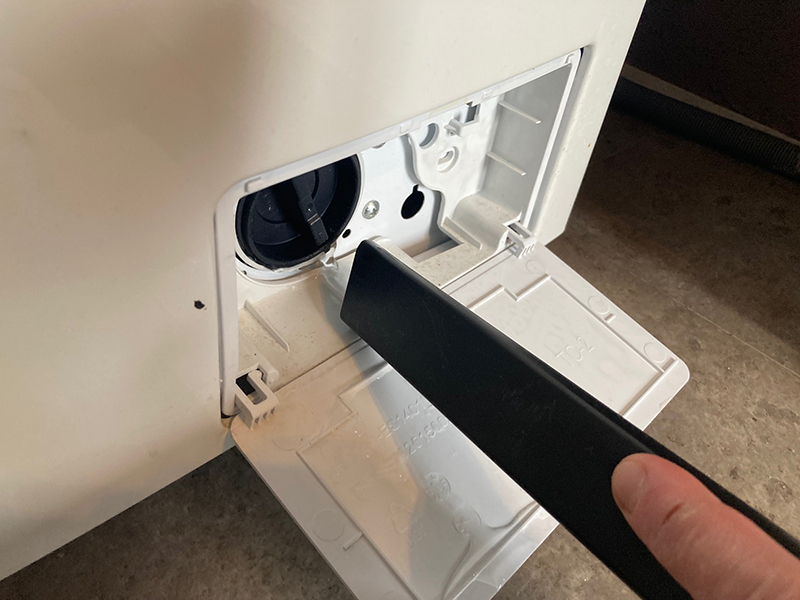
Additionally, if you have ever been unfortunate enough to experience a power cut while a load of washing is being cleaned in your washing machine, you’ll know that sometimes you are forced to empty out all of the soapy water this way. If this were to happen, Charles would prevent an ungodly amount of water from escaping and the subsequent clean-up.
Attachments and what they’re for
Charles comes with all of the standard attachments that the entire
All three of the attachments are strong and tough, and can be connected to either the end of the extension wand or the end of the black hose.
Upholstery brush

The upholstery brush is perfect for vacuuming upholstery (as you may have guessed), including sofas, chairs, stair-treads, and car seats. It has a circumference of firm bristles that are perfect for agitating dust and dirt, which can slide on and off the tool (in case you want to vacuum really delicate upholstered items). You need a bit of strength to use this tool successfully, but the results were really good (particularly on my stairs).
Upholstery brush before and after (multiple strokes)
Soft dusting brush
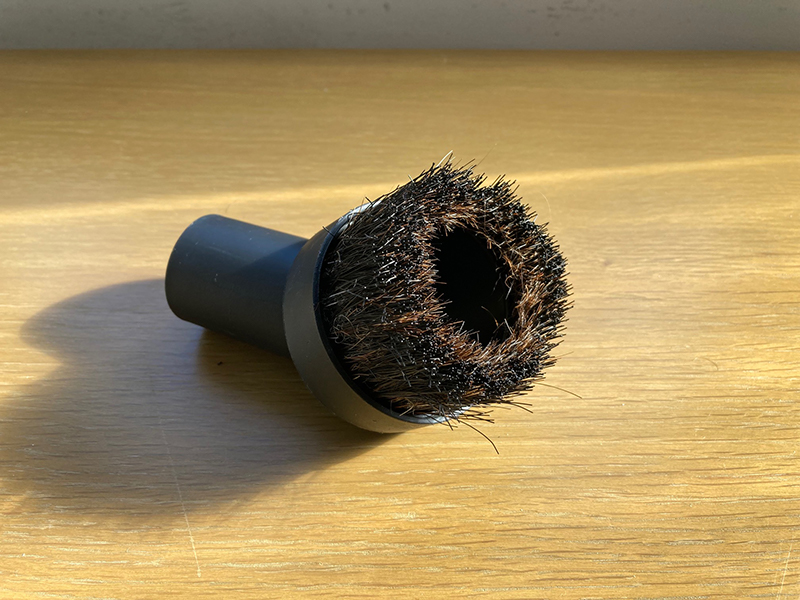
The soft dusting brush is small and circular, with a circumference of soft bristles that are similar to horse hair. It’s purpose is to very lightly agitate dust that has collected on delicate items, such as picture frames, ornaments, ceiling fans, lamp shades, and more. I found this particularly useful for cleaning a delicate velvet chair in my kids room, as well as my light fixtures.
Soft dusting brush before and after (multiple strokes)
Crevice tool
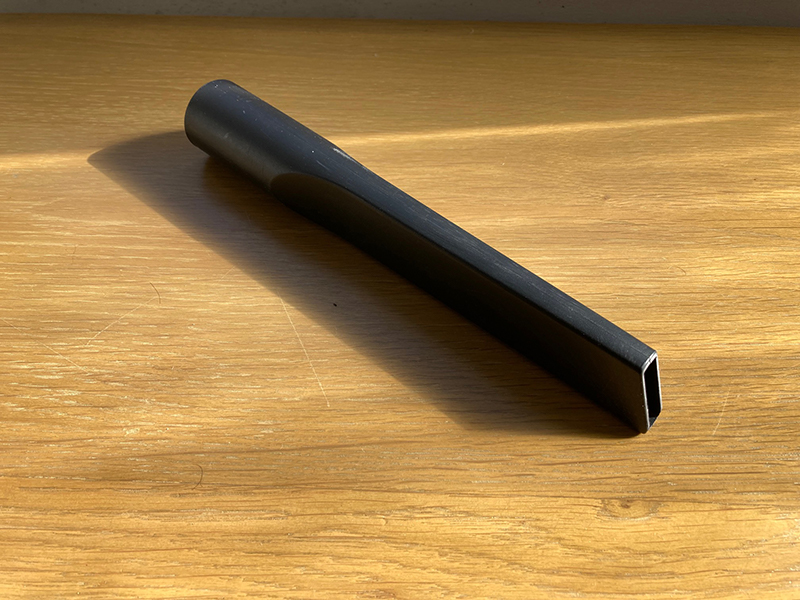
The crevice tool is long and thin in shape, which means that all of the suction power is being funnelled through a very narrow gap, that allows you to reach the really tight spots in your home, including down the side of your sofa and between your cat seats. Furthermore, it is also useful for attacking the gap between your skirting boards, furniture and carpet. I was able to get some really good results right up to my skirting boards with this attachment.
The crevice tool is fine to use for wet pickup.
Crevice tool before and after (one stroke)
Cord Length
Charles comes with a very lengthy 10-metre cord, which was long enough for me to vacuum the entire floor of my 3-bedroom Vicrorian terraced house without having to relocate to a new wall socket. This is a practical feature that really cuts down on vacuuming time, and it comes as standard with all of the machines in the
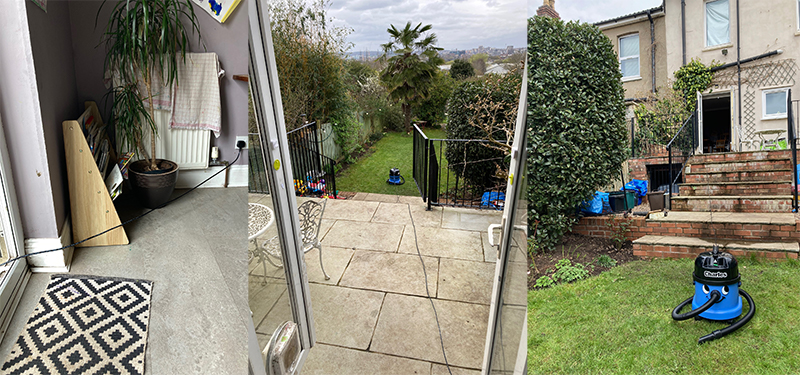
Storage
The cable storage on Charles is a bit awkward and has the impression of being an afterthought. Unlike with
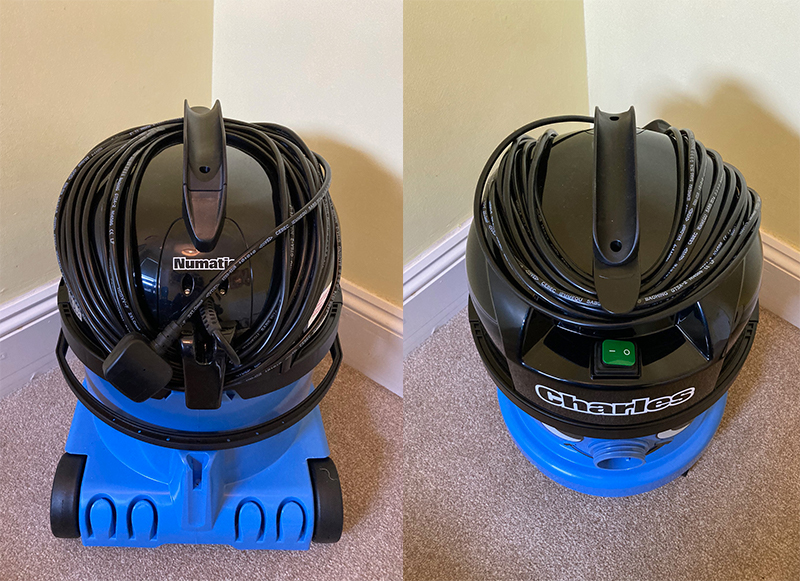
On the rear of Charles is a storage caddy, which offers the ability to slot in four attachments, including the floor tools. The regular
There is even a clip for the floor head that you currently have connected to the assembled extension wand, for easy verticle storage while not in use.
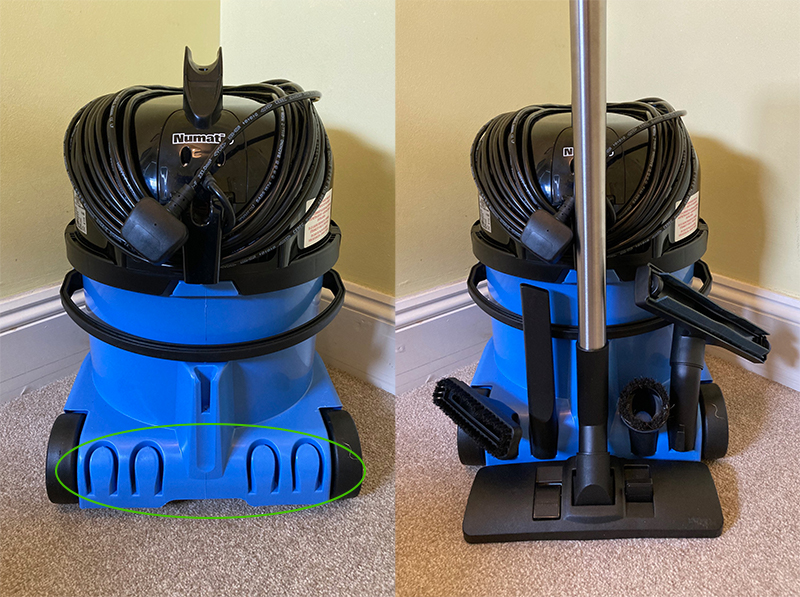
When it comes to storing the machine while it is not in use, it is definitely a little harder to find a space in the home to store Charles, in comparison to the much smaller
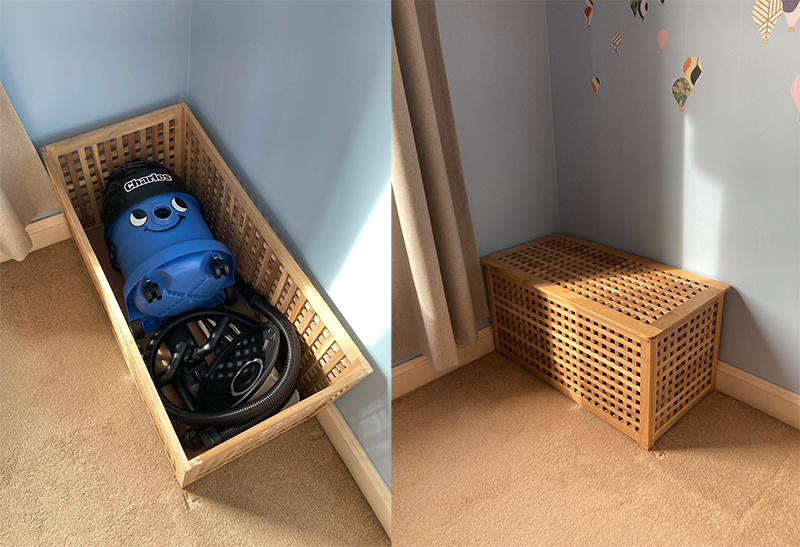
Dust Capacity
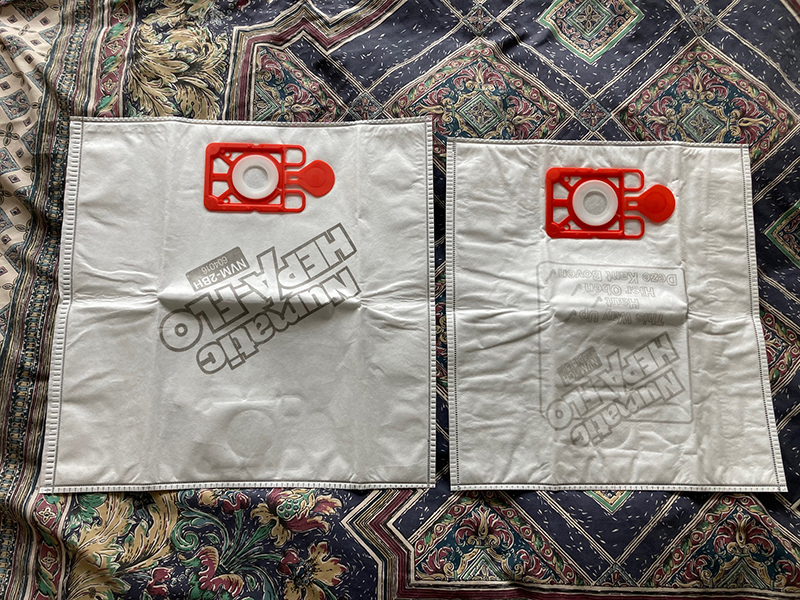
Charles has a very large dust capacity of 15 litres, which is far larger than
The bags are inexpensive to replace and feel tough and strong to the touch.
Manoeuvrability
I was surprised to see that Charles does not have the rubber buffer ring that runs around the circumference of the
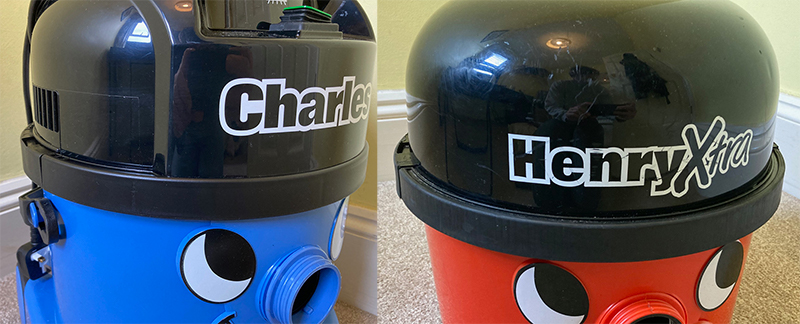
On the underside of Charles are two front swivel castors and two rear fixed wheels, and their combined efforts make Charles quite easy to pull along behind you as you go. The manoeuvrability of such a large and tall machine is really quite excellent, even when it is full of nine litres of water.
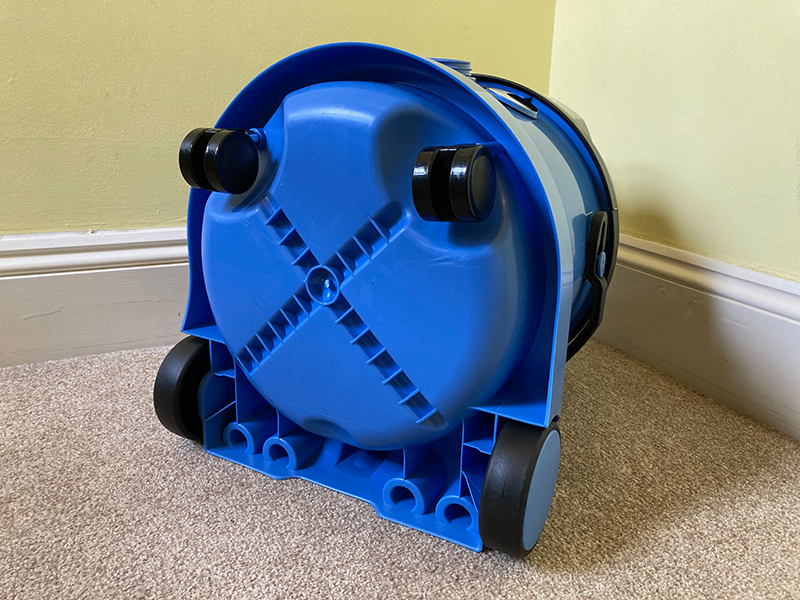
The two castors have a thin rubber coating that will protect your hard floors from scratches, but the rear wheels are missing the thick rubber that covers the counterpart wheels for the
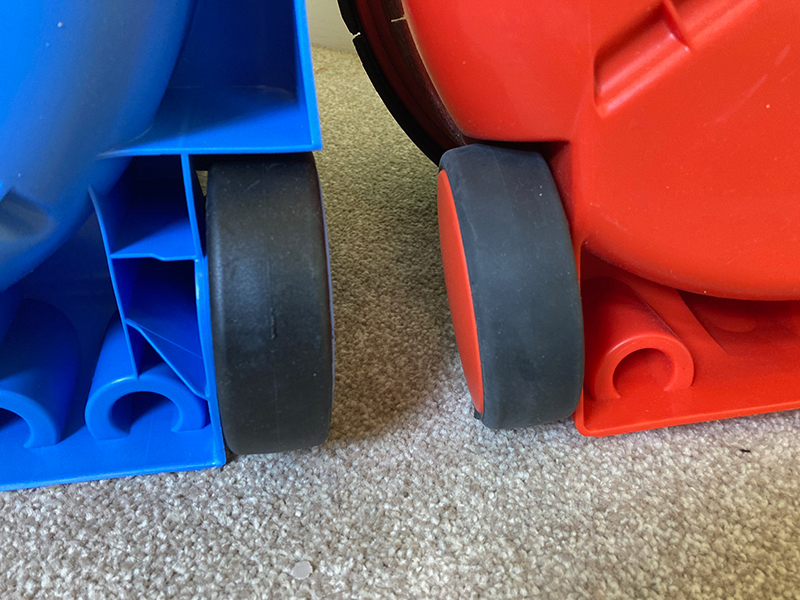
Stair cleaning with Charles
None of the vacuum cleaners in the
I found stair cleaning to be quite arduous, and I was fairly tired by the end of it.
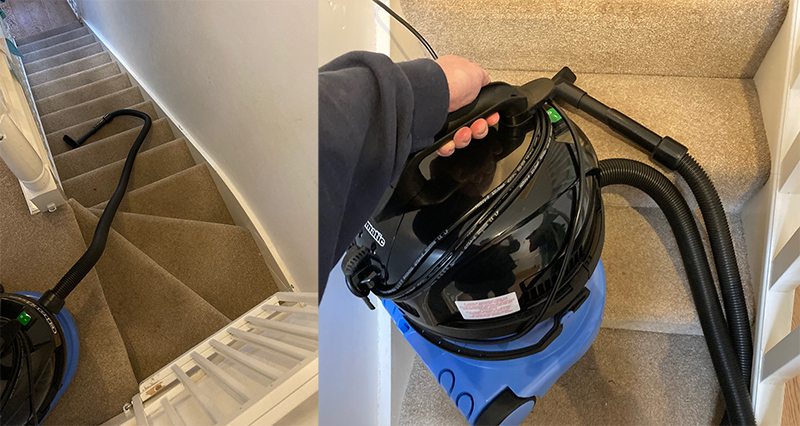
Car cleaning with Charles
Having just completed a return trip from Bristol to Worthing on the South Coast, with two young children snacking in the back in both directions, it seemed like the perfect opportunity to put Charles through his paces. Firstly, the long 10 metre cord meant that I could reach across our (albeit small) drive to our car without having to use an extension cord. I made use of all three attachments, with the upholstery brush being very effective on the floor mats and the boot, the soft dusting brush being best suited for the seats and dashboard area (the soft bristles were particularly handy for the air vents), and the crevice tool effectively reaching those really tight gaps down the side of the front seats.
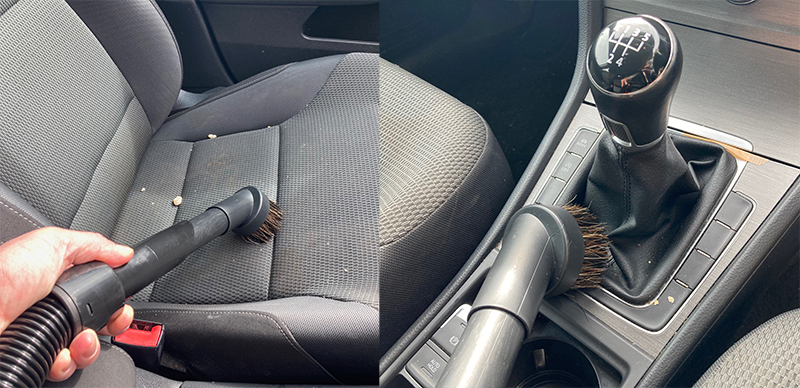
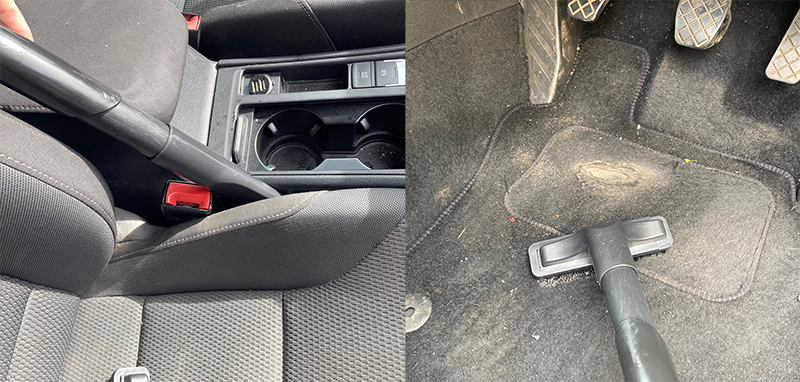
I was impressed by the cleaning results, and it really didn’t take much effort on my part, which I think is down to the large suction power of Charles.
Did you find this content useful? If you have time, your review on Facebook would really help us out!
Verdict
Charles impressed me greatly. His wet pickup ability is really impressive, and his simple, uncomplicated mechanics combined with strong, durable floor tools and accessories mean that he will likely last for years, just like all of the other vacuums in the
However, even though he is a dual vacuum, his real purpose and reason for being is to suck up liquids. Therefore, I would only consider buying Charles if you know that this is something you will benefit from. If you can’t see yourself using the wet pickup feature, I would opt for the regular
Where to buy Charles
- Review of the Henry Wash Carpet Cleaner - March 17, 2025
- Henry Quick Review - January 13, 2025
- The Henry Vacuum Range – What are the Differences in 2025? - January 5, 2025
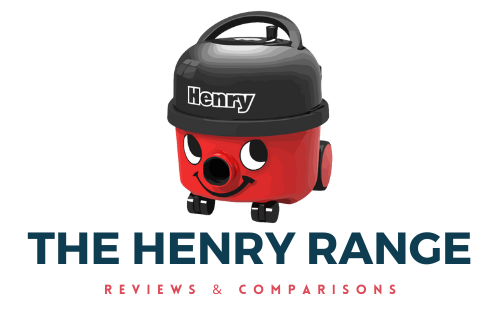


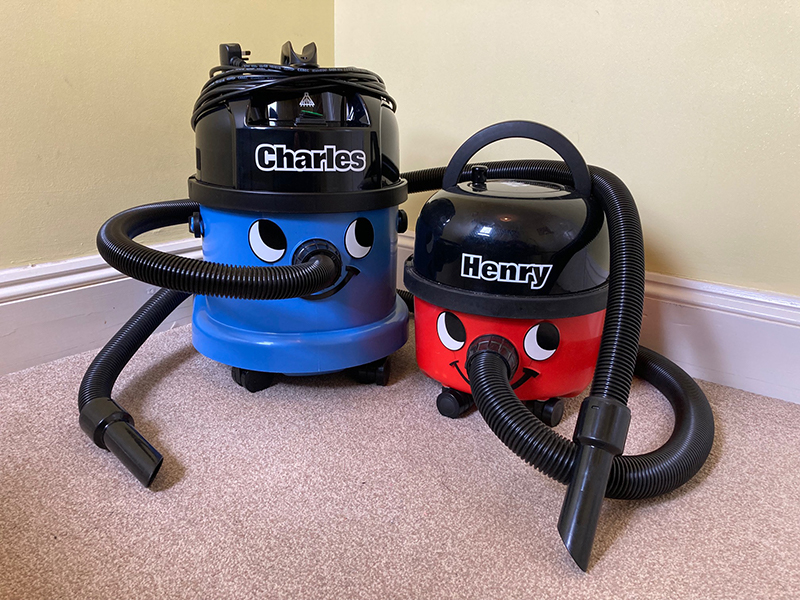
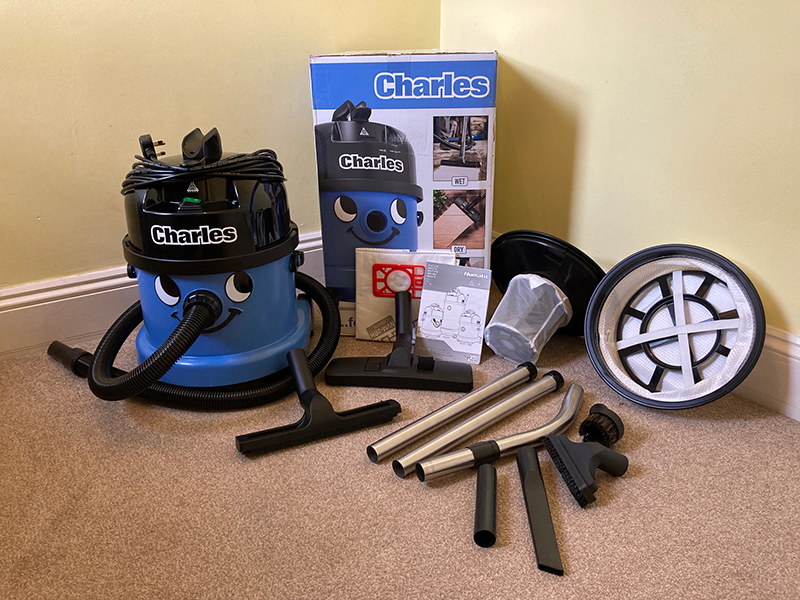
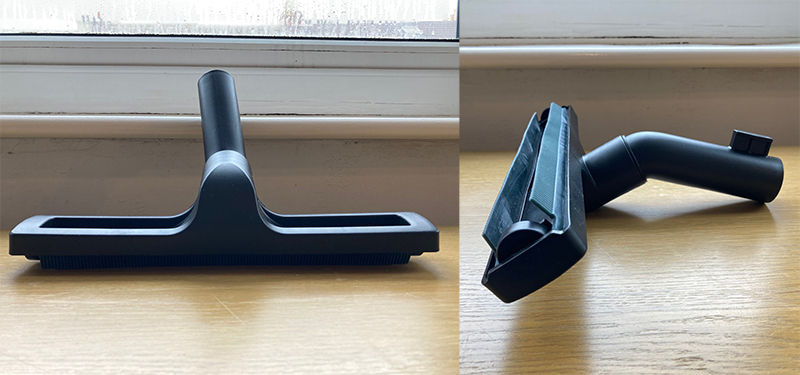
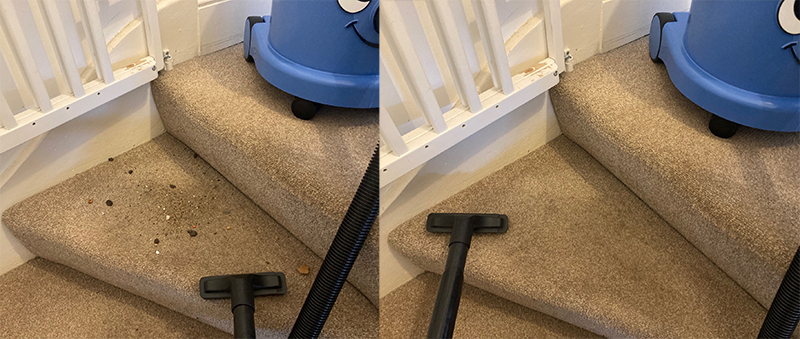
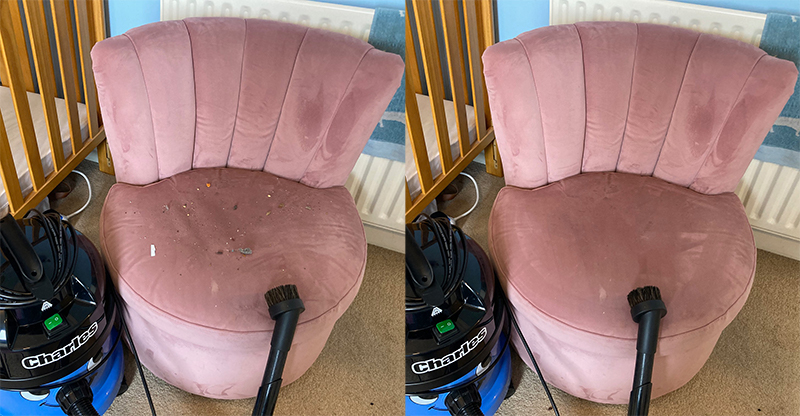
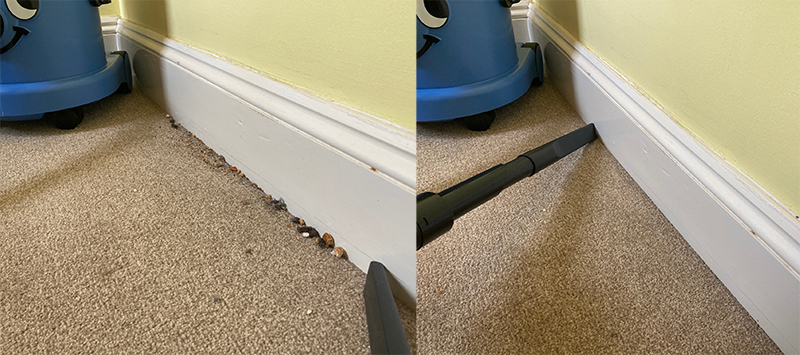
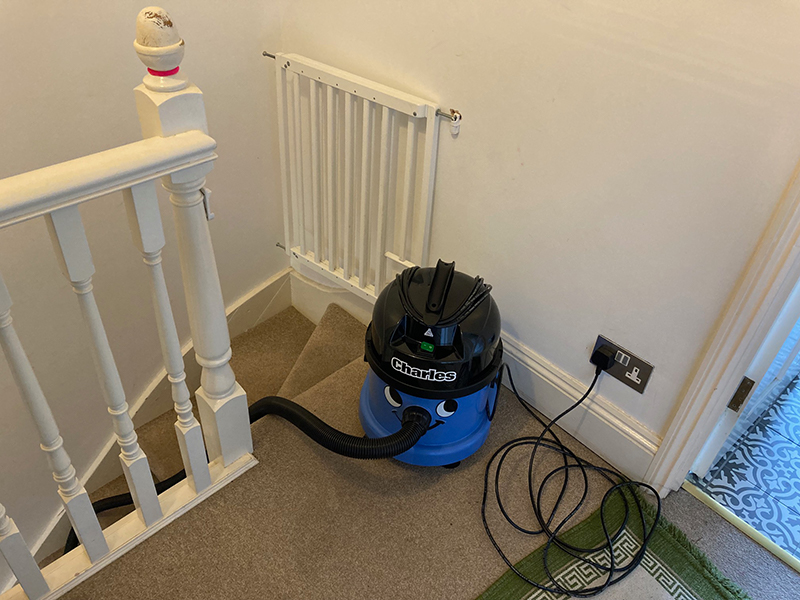
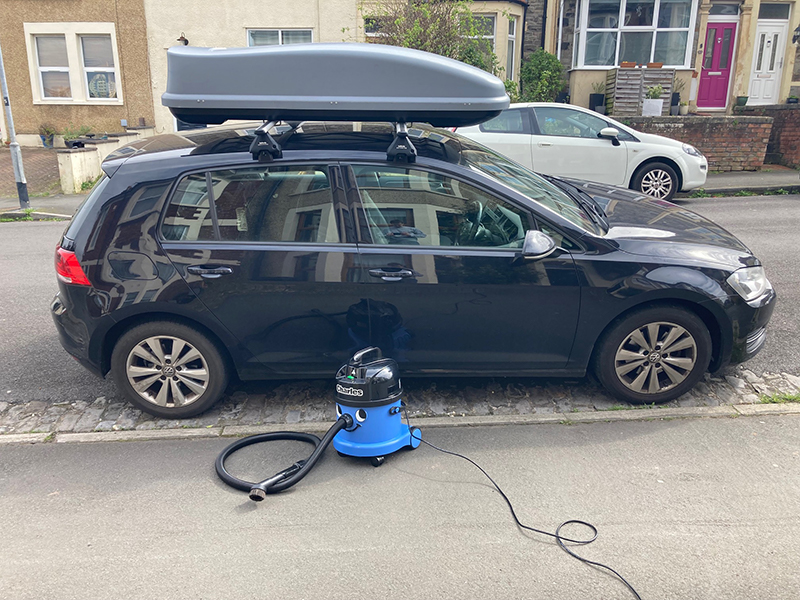

This model doesn’t appear on the Numatic website but is for sale in argos ?
Hi Darren, the Charles is currently for sale on myhenry.com
Unfortunately after only 3 years our motor has stopped working. Even though we’re only 1 year outside warranty we’ve been told there’s nothing we can do unless we pay the additional fixing costs
I am sorry to hear that. The official manufacturer myhenry.com do offer a standard 3 year warranty with their purchases, which is worth considering for the future.
I cannot find out if any of the range have a “power take off socket” !!!!
Hi Patrick. I believe that the only Numatic model that has a power take off feature is this one https://numatic.co.uk/product/tradeline-tem390a/
How long are the HOSEs on the Charlie and/or other “Henry” vacuum cleaners, please?
The standard hose length is 2.5m Jane but you can buy 5m long ones.
now we are elderly, we need a lighter cleaner. is blue charles
lighter than henry. can i have comparisons between the two
Hi James. The Charles (9KG) is actually heavier than Henry (7.5KG). The lightest vacuum in this range is the Henry Quick.